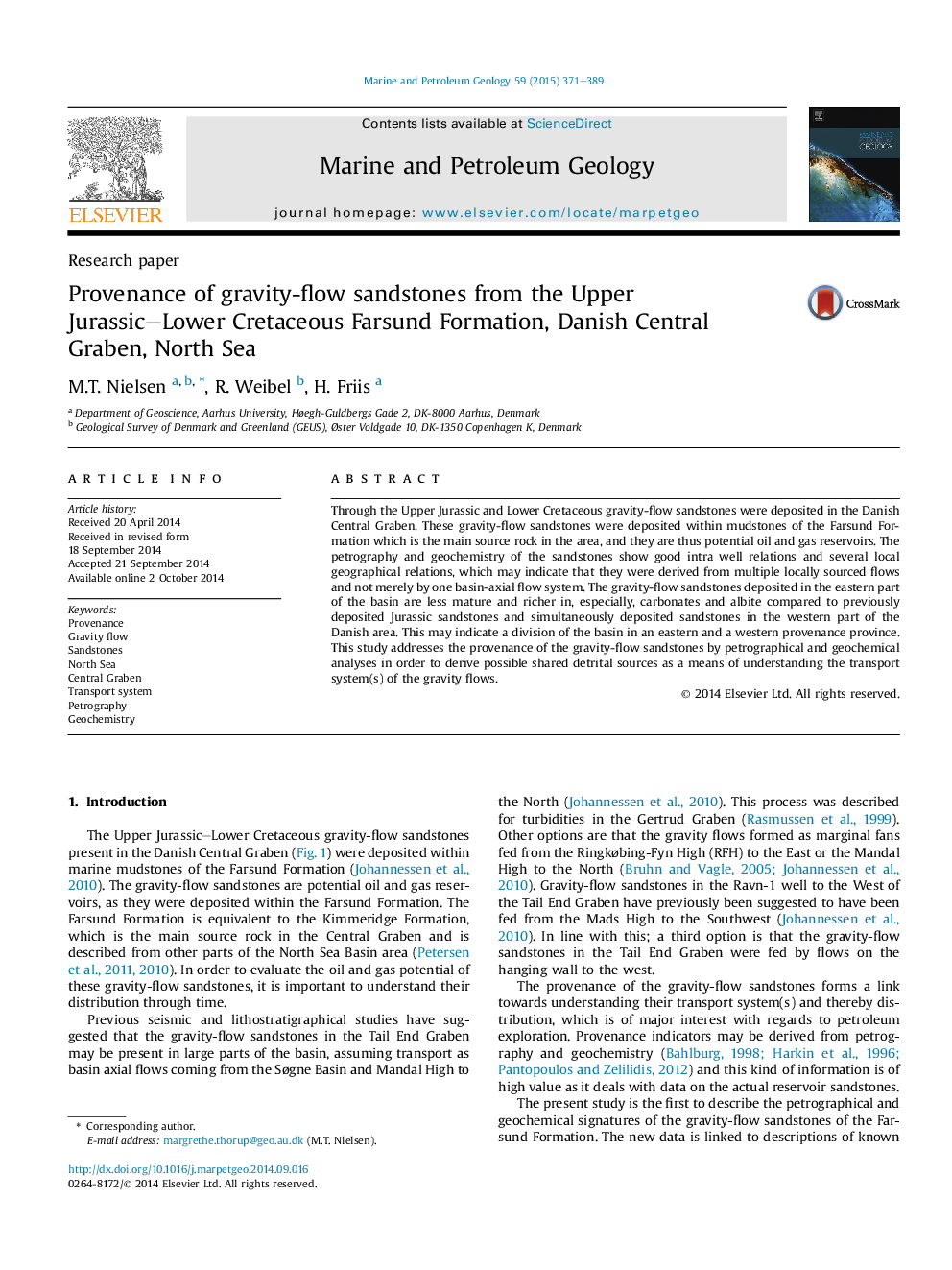| Article ID | Journal | Published Year | Pages | File Type |
|---|---|---|---|---|
| 4695628 | Marine and Petroleum Geology | 2015 | 19 Pages |
•The studied gravity flow sandstones show a high similarity within single wells.•The gravity flow sandstones were deposited by locally sourced flows.•There are indices, that the basin was divided in an eastern and a western province.
Through the Upper Jurassic and Lower Cretaceous gravity-flow sandstones were deposited in the Danish Central Graben. These gravity-flow sandstones were deposited within mudstones of the Farsund Formation which is the main source rock in the area, and they are thus potential oil and gas reservoirs. The petrography and geochemistry of the sandstones show good intra well relations and several local geographical relations, which may indicate that they were derived from multiple locally sourced flows and not merely by one basin-axial flow system. The gravity-flow sandstones deposited in the eastern part of the basin are less mature and richer in, especially, carbonates and albite compared to previously deposited Jurassic sandstones and simultaneously deposited sandstones in the western part of the Danish area. This may indicate a division of the basin in an eastern and a western provenance province. This study addresses the provenance of the gravity-flow sandstones by petrographical and geochemical analyses in order to derive possible shared detrital sources as a means of understanding the transport system(s) of the gravity flows.
